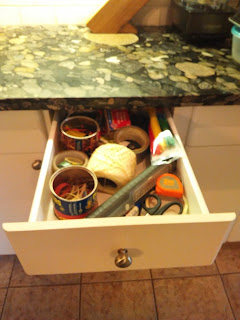Saturday, October 24, 2020
Small Box B
Thursday, October 22, 2020
Small Box Project - What you can get from a Skid
In our kitchens there has always been a 'Junk Drawer'. In this drawer lives the many miscellaneous house hold things that need to be at hand, but....don't really belong. This drawer holds, zip ties, twist ties, rubber bands, string, a flash light, and emergency radio and other stuff. This drawer served as the inspiration for a proof of concept project. The tins holding the twist ties and rubber bands have gotten nasty and rusted, time to be replace with something nice and without sharp edges.
Saturday, October 17, 2020
Last Week - Safety On the Brain - Boiled Linseed Oil.
Since we live in the Great White North, almost, we are doing some yard things to get ready for the coming cold weather. Eva is spreading wood chips around the garden and pruning shrubs. I have disconnected the hoses and turned the water supply off, pumps needs to be pulled from the water features too. It's not that cold yet, but any job involving water is best not put off too late.
The other thing I have worked on is Tromso. He needed some paint and I sealed his back side with boiled linseed oil/oil based poly/turpentine mixture.
Monday, October 12, 2020
Picture Frame - Mitre Corner with splines
Wednesday, October 7, 2020
Finished - Street Find
After some gluing and sanding I drew patterns on the ends of the tote. Since is a garden tote, one end is spring and the other fall. I used my wood burning pens to outline the patterns, then painted them with water colour. The whole thing will get several coats of varnish to make it mud repellent for work in a garden.



























